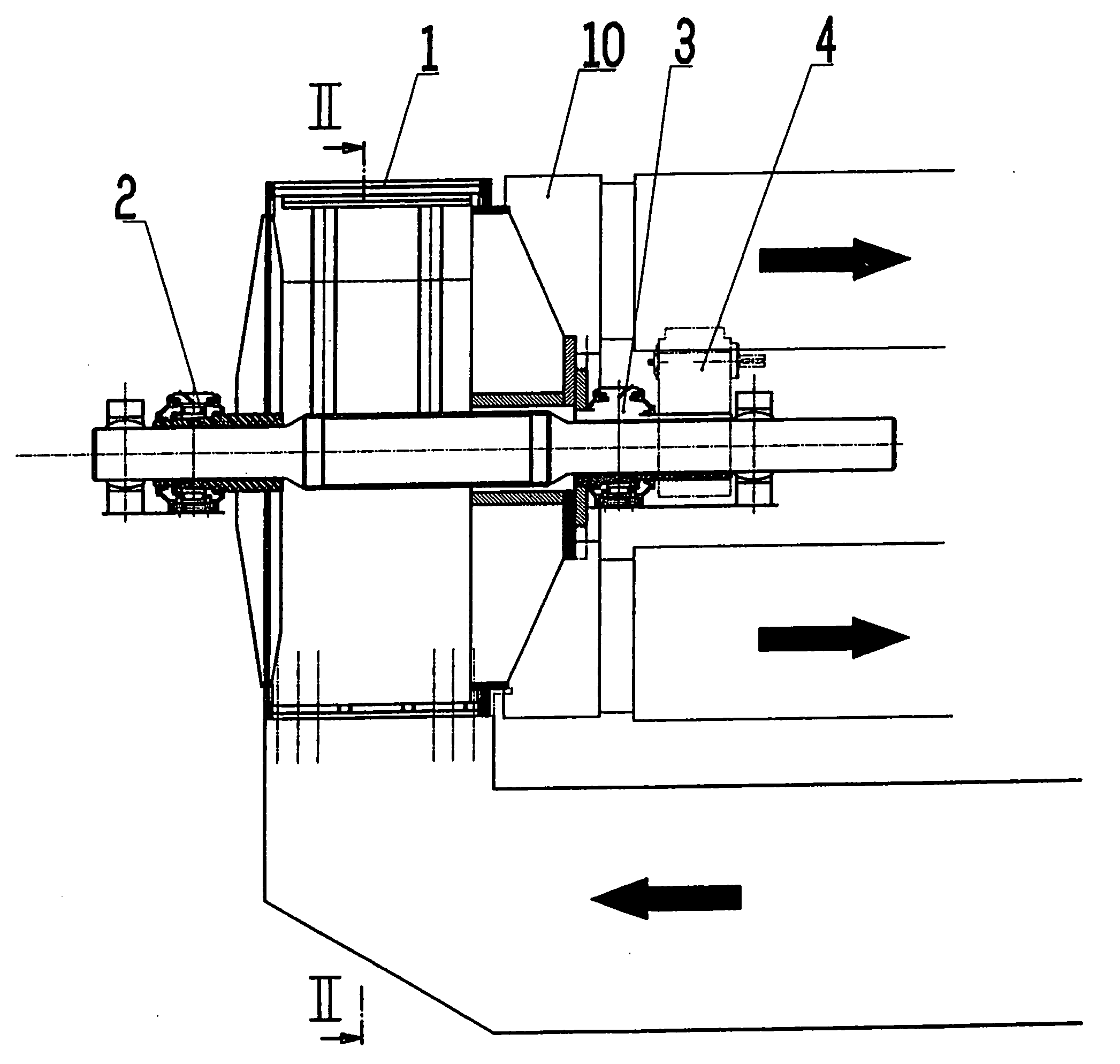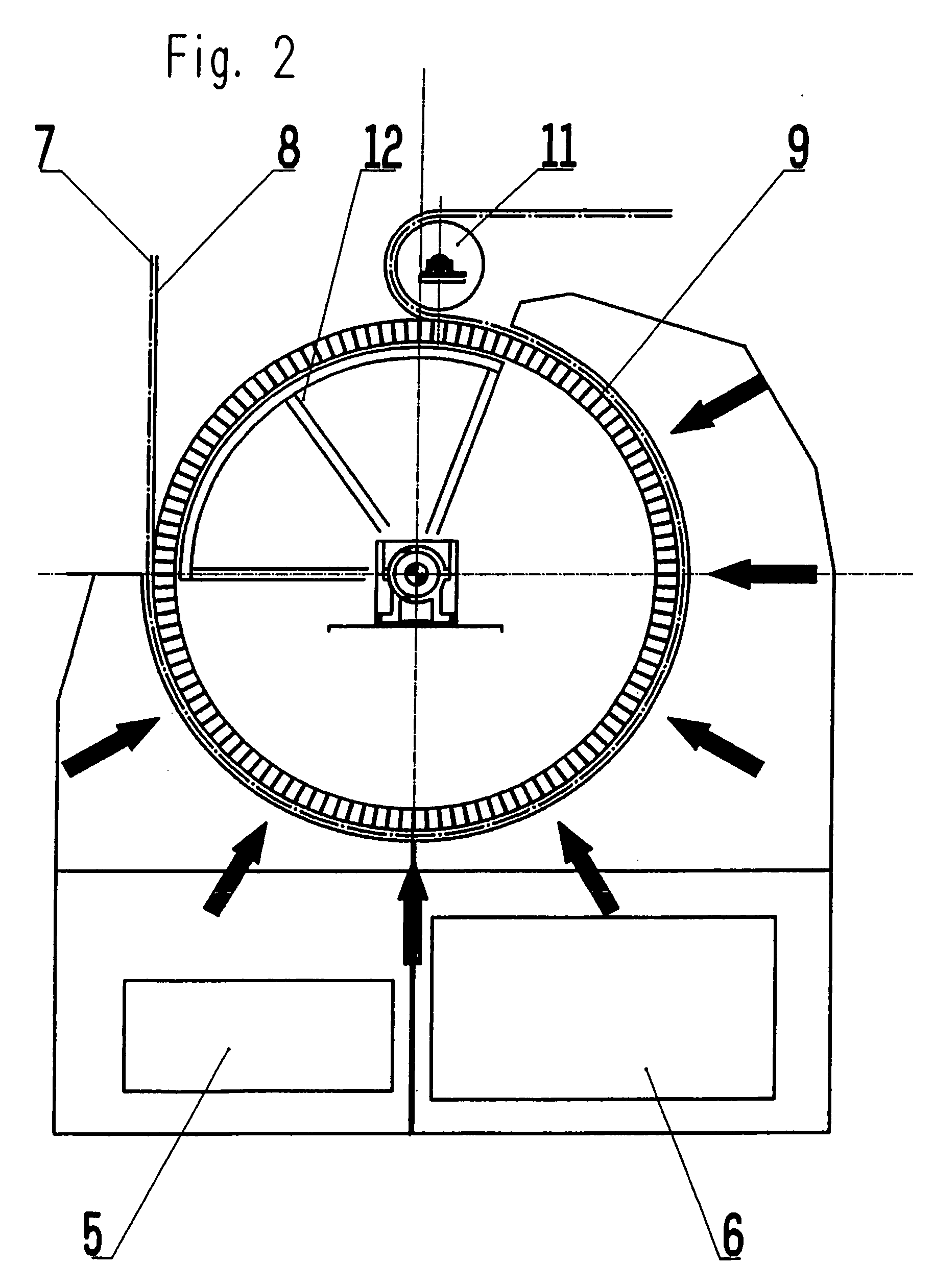Device for continuous drying of a pulp web
a technology of continuous drying and pulp web, which is applied in the direction of presses, lighting and heating apparatus, furniture, etc., can solve the problems of deformation and even structural damage, and the same damage occurs, and achieve the effects of less specific load, reduced risk of marks on the paper web, and good stability in the cylinder shell
- Summary
- Abstract
- Description
- Claims
- Application Information
AI Technical Summary
Benefits of technology
Problems solved by technology
Method used
Image
Examples
Embodiment Construction
[0021]FIG. 1 shows a possible configuration of a through-air drying process. The figure shows the drum 1 with its bearings 2 and 3, and the drive 4.
[0022] Beneath the drum there is a two-part hood 5 and 6 (see FIG. 2) from which the hot supply air flows through the paper web, through a conveying wire 8, then through the drying drum 1 into the inside of the drum, and is removed from the drum on the drive side through an annular channel 10. The hot supply air at a temperature of approximately 300° C. is cooled down to approximately 120° C. by the drying process. The exhaust air cooled in this way is then returned to its entry status in a processing system. At the outlet, the paper web 7 with the conveying wire 8 is carried over a deflection roll 11. The cover device 12 is clearly visible here, covering the area of the drum 1 from the inside outwards in the sector that does not come into contact with the tissue web 7 and which also is not enclosed by the hood 5 and 6. This prevents ad...
PUM
 Login to View More
Login to View More Abstract
Description
Claims
Application Information
 Login to View More
Login to View More - R&D
- Intellectual Property
- Life Sciences
- Materials
- Tech Scout
- Unparalleled Data Quality
- Higher Quality Content
- 60% Fewer Hallucinations
Browse by: Latest US Patents, China's latest patents, Technical Efficacy Thesaurus, Application Domain, Technology Topic, Popular Technical Reports.
© 2025 PatSnap. All rights reserved.Legal|Privacy policy|Modern Slavery Act Transparency Statement|Sitemap|About US| Contact US: help@patsnap.com



